Today Current Affairs: 30th November 2021 for UPSC IAS exams, State PSC exams, SSC CGL, State SSC, RRB, Railways, Banking Exam & IBPS, etc
Table of Contents
Bharat Gaurav scheme:
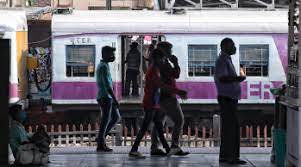
To tap the huge potential of tourism, the Railways has announced the ‘Bharat Gaurav’ Scheme.
About the Bharat Gaurav Scheme:
- Under this Scheme, theme-based tourist circuit trains, on the lines of the Ramayana Express, can be run either by private or State-owned operators.
Key features of the scheme:
- Service providers, who can be an individual, company, society, trust, joint venture or consortium will be free to decide themes/circuits.
- They will offer an all-inclusive package to tourists including rail travel, hotel accommodation and sightseeing arrangement, visit to historical/heritage sites, tour guides etc.
- They have full flexibility to decide the package cost.
- The service providers will also be able to design/furnish the interior of the coaches based on the theme and put branding or advertising inside and outside of the train.
Project SWADESH:
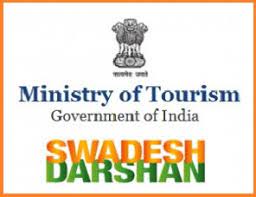
The Department of Biotechnology (DBT)-National Brain Research Centre (DBT-NBRC) has developed Project SWADESH, for managing Neurological disorders.
- NBRC is the only institute in India dedicated to Neuroscience Research and Education.
- It is the first large-scale multimodal neuroimaging database designed specifically for the Indian population with big-data architecture and analytics for various disease categories under one platform.
- It proposes a big-data architecture that manages and analyzes six modules, namely neurodegenerative [AD, Mild Cognitive Impairment (MCI), and Parkinson’s disease (PD)], neuropsychiatric (schizophrenia and bipolar disorder), neurodevelopmental (autism and epilepsy), Covid-19-related disorders, other disorders, and healthy subjects.
- It is supported by JAVA-based workflow environments and Python. Backed by a dedicated storage system, it provides quality control, data analysis reports, and data backups.
- Python and Java are both computer programming languages.
- It will be useful in conducting multimodal brain studies to understand Alzheimer’s disease and several neurological disorders.
- Its development will facilitate the integration of multi-site data and collaborative research worldwide.
SAFAR:
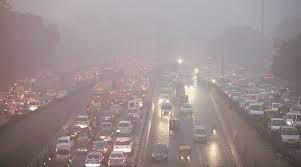
SAFAR (System of Air Quality and Weather Forecast and Research) has studied post Diwali Air Pollution in the four Indian Cities (Delhi, Ahmedabad, Mumbai and Pune).
- Air pollution during the Diwali period in 2021 was higher compared to 2020 in the three metropolitan cities of Delhi, Ahmedabad and Mumbai, whereas Pune was the only city among the four which had lower pollution levels.
- High PM in Delhi during the Diwali period is due to high local emissions, combined with the biomass burning effect.
- SAFAR is a national initiative introduced by the Ministry of Earth Sciences (MoES) to measure the air quality of a metropolitan city, by measuring the overall pollution level and the location-specific air quality of the city.
- It is an integral part of India’s first Air Quality Early Warning System operational in Delhi.
- It monitors all weather parameters like temperature, rainfall, humidity, wind speed, and wind direction, UV radiation, and solar radiation.
- The World Meteorological Organization has recognized SAFAR as a prototype activity on the basis of the high-quality control and standards maintained in its implementation.
Pollutants Monitored: - PM2.5, PM10, Ozone, Carbon Monoxide (CO), Nitrogen Oxides (NOx), Sulfur Dioxide (SO2), Benzene, Toluene, Xylene, and Mercury.
- Developed By: The system is indigenously developed by the Indian Institute of Tropical Meteorology (IITM), Pune and is operationalized by the India Meteorological Department (IMD).
- IITM has a giant true color LED (Light Emitting Diode) display that gives out a real-time Air Quality Index (AQI) on a 24×7 basis with color-coding (along with 72 hours advance forecast).
- Objectives:
- To increase awareness among the general public regarding the air quality in their city so that appropriate mitigation measures and systematic action can be taken up.
- To help the policy-makers develop mitigation strategies keeping in mind the nation’s economic development.
9th BRICS Science & Technology Ministers Meeting:
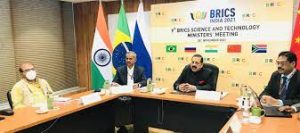
India’s Minister for Science & Technology chaired the 9th BRICS Science & Technology Ministers meeting.
- Earlier, the Prime Minister chaired the annual summit of the BRICS which was held virtually.
- 2021 is an important landmark year in BRICS Cooperation as the grouping completed 15 years.
- The member countries should work towards a rightful place for BRICS (Brazil, Russia, India, China, and South Africa) in the Global Innovation Index.
- It can be achieved through further strengthening the cooperation in the field of Science, Technology and Innovation (STI).
- BRICS Ranking in Global Innovation Index, 2021: India (46), China (12), Russia (45), Brazil (57) and South Africa (61).
- BRICS countries must come together and innovate cost effective, affordable, accessible, sustainable and scalable scientific solutions, as they face many similar and unique challenges.
- BRICS Innovation Cooperation Action Plan (2021-24)
- BRICS member countries have agreed to a Science, Technology and Innovation (STI)-led BRICS Innovation Cooperation Action Plan (2021-24) proposed by India during the 12th meeting of the grouping’s science & technology steering committee.
- It will facilitate sharing of experiences of each other’s innovation ecosystem and networking of innovators and entrepreneurs.
- In accordance with the plan BRICS Ministers and their representatives endorsed the BRICS Science, Technology and Innovation Calendar of Activities 2020-2021.
Ganga Connect Exhibition: UK

The Ganga Connect exhibition concluded in London on 25th November 2021.
- It was inaugurated in Glasgow, Scotland after the successful culmination of COP-26 (Conference of parties) on 12th November 2021.
- 10 key strategic initiatives were announced during the exhibition
- It is a global exhibition that will showcase multiple facets of the river basin and connect with interested parties.
- It has been a major effort of the National Mission for Clean Ganga, the High Commission of India and C-Ganga (Centre for Ganga River Basin Management and Studies) to engage with the international community of scientists, technology companies, policy makers, industry, investors and finance professionals.
- Objective: To showcase the level of development in the Ganga River basin to a global community of environmental stakeholders..
Significance:
- Creating Awareness:
- It is significant from the point of view of preserving and protecting Ganga and its ecosystem and creating widespread awareness about the river basin.
- It demonstrates the deep spiritual and philosophical connect that Indians have with the river.
- Understanding Ecosystem:
- The Ganga Connect exhibition offers a clear and deep understanding of the size, magnitude and complexity of the Ganga riverine ecosystem.
- Enables Engagement:
- It enables engagement with interested parties and the diaspora who want to get involved in the rejuvenation, restoration and conservation of the river system.
- Development of Environmental Solution:
-
- It emphasizes on river Ganga as a major lab for global technology and the scientific community to develop cutting-edge environmental solutions.
-
Omicron: New Corona Variant
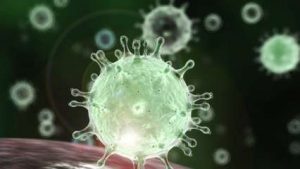
The World Health Organization has declared the recently-discovered B.1.1.529 strain of Covid-19, to be a variant of concern.
- The virus was first detected in Southern Africa and it is renamed Omicron.
- Omicron is placed in the most-troubling category of Covid-19 variants, along with the globally-dominant Delta plus its weaker rivals Alpha, Beta and Gamma.
- This variant has a large number of mutations. Some of them are cause for serious concern because they may allow the new variant to evade immunity obtained from a past infection or via a vaccine.
- However, there are no reliable estimates of just how much more transmissible the Omicron variant is compared to previous strains of the virus
- Apart from South Africa, Omicron has been detected in Israel in people coming from Malawi; Botswana; Belgium and Hong Kong.
- The WHO has decided to name the variants after the letters of the Greek alphabet, to avoid the countries that first detected them being stigmatised.
- WHO selected the name Omicron, instead of Nu or Xi, the two letters between Mu and Omicron. This is because:
- Xi happens to be a popular surname in China (avoiding ‘causing offence to any cultural, social, national, regional, professional or ethnic groups).
- Nu could have been confused with the word ‘new’.
Situation In India:
- Seroprevalence studies indicate that a large proportion of the population has already been exposed to the virus providing some level of protection to subsequent infections.
- Further, the immunisation campaign has gained momentum.
- Approximately 44% of Indian adults have been fully vaccinated and 82% have received at least one dose.
- Scientists believe that prior infection followed by one or two doses of vaccination may have a larger protective effect than two doses of the vaccination alone.
2nd Global Chemicals & Petrochemicals Manufacturing Hub (GCPMH):

Dr. Mansukh Mandaviya, Union Minister for Chemicals & Fertilizers inaugurated the 2nd Global Chemicals & Petrochemicals Manufacturing Hub (GCPMH).
- The event is being organised by the Department of Chemicals & Petrochemicals, Ministry of Chemicals & Fertilizers, Government of India jointly with the Federation of Indian Chambers of Commerce and Industry (FICCI), in Phygital format (Physical and Digital) and aims to transform India to a global chemical and Petro-chemical manufacturing hub.
- The summit highlights the true potential of the Indian Chemicals and Petrochemicals Sector to the world.
- This edition of the Summit will strengthen our effort to establish Petroleum, Chemicals and Petrochemicals Investment Regions (PCPIRs) as world-class Chemicals and Petrochemicals Manufacturing terminals and Potential and a positive outlook of Indian chemical & petrochemical industry.
- The Petroleum, Chemicals and Petrochemicals Investment Region (PCPIR) policy, announced by the Government of India (GoI) in April 2007, envisages the development of Global Scale Industrial Corridors in the Petroleum, Chemical and Petrochemical sectors of the country.
Wage Rate Index:

Expert Group unveils report on base revision of Wage Rate Index (WRI) to 2016=100 from base 1963-65=100.
- The new series of Wage Rate Index (WRI) with base year 2016=100, is being compiled and maintained by Labour Bureau, an attached office of Ministry of Labour & Employment.
- The new series of WRI with base 2016=100 will replace the old series with base 1963-65=100.
- The New WRI Series with base 2016=100 would be compiled twice a year on point-to-point half yearly basis, as on 1st January and 1st July of every year.
- Some of the major improvements made under the new series of WRI (2016=100) vis-à-vis old series (1963-65=100) are as under:
- The weighting diagram in the new WRI series has been prepared from the results of the Occupational Wage Survey (Seventh) round.
- A total of 37 industries have been covered in the new WRI basket (2016=100) as against 21 industries in the 1963-65=100 series.
- The selected 37 industries in the new series are categorized as 30 industries from Manufacturing sector, 4 industries from Mining Sector and 3 industries from Plantation Sector as compared to 14 industries from Manufacturing sector, 4 industries from Mining Sector and 3 industries from Plantation Sector in the old series.
- In the new WRI basket, the current wage data has been collected from 2881 units under 37 selected industries as against to 1256 units under 21 industries in the old series of WRI.
- About 700 occupations have been covered under 37 selected industries in new series of WRI (2016=100).
Primary Health Care:
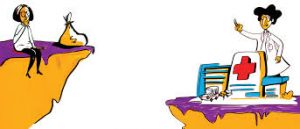
The Government of India and the Asian Development Bank (ADB) signed a $300 million loan to strengthen and improve access to comprehensive primary health care in urban areas of 13 states that will benefit over 256 million urban dwellers including 51 million from slum areas.
- The programme supports the Government of India’s key health initiatives – Ayushman Bharat Health and Wellness Centres (AB-HWC) and Pradhan Mantri Atmanirbhar Swasth Bharat Yojana (PM-ASBY) – which has been renamed as Pradhan Mantri Ayushman Bharat Health Infrastructure Mission (PM-ABHIM)
- Ayushman Bharat programme, launched in 2018, aims to improve access to comprehensive primary health care as a key strategy to achieve universal health coverage in India.
- With the spread of the coronavirus disease (COVID-19) pandemic that put additional pressure on the country’s health system, the government launched PM-ASBY later renamed as PM-ABHIM in October 2021 to adopt a long-term approach to system strengthening to prepare for future pandemics and other emergencies.
- The programme will be implemented in urban areas across 13 states: Andhra Pradesh, Assam, Chhattisgarh, Gujarat, Haryana, Jharkhand, Karnataka, Madhya Pradesh, Maharashtra, Rajasthan, Tamil Nadu, Telangana, and West Bengal.
- The programme is supported by a $2 million technical assistance grant from ADB’s Japan Fund for Poverty Reduction.
Madhya Pradesh Tribal Outreach Programme:

Madhya Pradesh government has initiated a massive tribal outreach programme in the state.
- Important tribes in the state include Bhils and Gonds.
- As part of the tribals outreach programme, the state has undertaken the following measures:
- Implementation of the Panchayats (Extension to Scheduled Areas) Act, 1996, which allows self-governance through traditional gram sabhas for people living in scheduled areas.
- Legalising mohua, a staple drink of the tribals, which will be sold as ‘heritage liquor’.
- The chief minister has also announced that petty cases registered against tribals will also be withdrawn, most of which are for production and sale of mahua-based liquor.
- Home delivery of foodgrains distributed under public distribution across all 89 tribal blocks has also been announced.
- University in Chhindwara to be named after Shankar Shah. Shankar Shah, son of Sumer Shah, was the last ruler of Garha Kingdom under Gond rule.
- Railway station, bus stop to be renamed after Tantya Bhil, a memorial in his name in Khandwa.
- A medical college in Mandla will be named after Raja Hirde Shah Lodhi, who had come from Kashi and settled in MP’s Bundelkhand region. His ancestors had established their kingdom in the present-day Damoh which was then under Gond rulers.
- Bhopal’s Habibganj station renamed after Gond queen- Rani Kamlapati.
- Raja Sangram Shah award for best work in tribal art and culture. He was the 48th Gond ruler of Garha kingdom.




